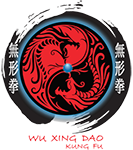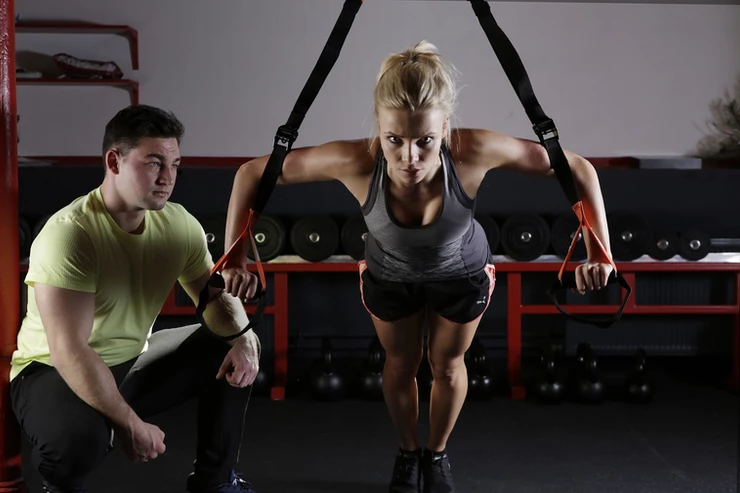Exercise in any form is fantastic for your health; however lack of knowledge particularly when it comes to resistance training can lead to serious injury. Avoid these 5 common mistakes, and make your fitness journey a safe one!
When embarking on any journey, the most important lesson I have learned is to come prepared. Nothing spells disaster more quickly than setting out on a three day hike through bush land without a map, a good sense of direction or a supply of toilet paper, as anyone who has wiped their bum with leaves will tell you.
Common sense dictates that before undertaking such a serious journey, you would do some research to determine the safety of the route chosen, the starting and end point of your destination, and carry equipment for emergencies such as a compass for direction, a first aid kit, a mobile phone and/or flares as well, to ensure you can be located if lost.
Most, if not all avid hikers/adventurers will have one or more stories of a trip that went ‘pear shaped’ in one form or another despite best laid plans, but all of them will attest to the need to be prepared to avoid a potential disaster. So how does this relate to exercise in a gym environment?
Well, if you are a Member of a big corporate gym, I can almost guarantee you have been on the floor doing your workout, and seen a relative new comer looking very ‘lost’ as they walk among the rows and rows of shiny exercise equipment, or alternatively are enthusiastically ‘banging away’ on a machine or free weights, using terrible form, or the equipment itself incorrectly.
As a Gym Instructor since 2006, I have seen the landscape change significantly since I started my career in fitness, and with the internet consistently flooded with more an more information about training methods, it has now become much easier to research how to do certain exercises with proper form, to prevent the possibility of injury.

On the other side of the coin, there is also a lot of misinformation, and differentiating opinions on the best way to approach a certain exercise or a routine in general, so it can still leave people confused over the best way to start.
So in short, what are the top 5 common exercise mistakes to avoid when starting out on your health and fitness journey?
Common Exercise Mistakes

1. Incorrect form on exercises
As mentioned previously, when starting out on your fitness journey it is always better to be prepared. This includes having a training program ready when you hit the gym floor, and to understand all of the exercises you will be doing and the correct technique for each.
There are many great resources that you can look to on sites like You Tube, which have step by step instructions for many different exercises. Anther suggestion is to to seek some assistance from a qualified Personal Trainer to create a program for you, and to run you through the exercises prior to commencing. Alternatively find a great training partner who already has some experience, and their help!

Poor or incorrect form on exercises greatly increases the likelihood of acute or chronic injuries, especially when doing more complex compound movements i.e. squats, lunges or dead lifts, which use a lot of different muscle groups to complete the movement.
Incorrect technique can also mean that you’re working at a speed or difficulty that’s not right for you, so consider practicing all movements carefully and slowly at first using minimal weight, until you are confident that you have perfect form. Where possible, doing these exercises in front of a mirror will also allow you to critique your own movements, and ensure the exercise looks and feels right.
Having careful consideration of the above points and planning ahead of your arrival at the gym can ensure a practical, safe and efficient workout, that feels right and gets the desired results.
Failing to plan is always a recipe for disaster when it comes to fitness training.
2. Having unrealistic expectations

As an example, if your goal is to lose weight, then working towards a 0.5 – 1kg loss per week is a solid and achievable plan, rather than having an overall goal of losing 10kg, without a defined time frame to do it in.
If your goal is to get fitter, then increase the intensity of your workouts by no more than 10 percent per week. This will allow you to gradually improve your cardiovascular fitness without the risk of over training, which can lead to acute muscle soreness or injury.
If your main aim is muscle gain, aim to increase the resistance or weight used for each exercise slowly and try varying workout intensities, rather than looking for big jumps in weight, which can lead to poor form and potential injury. Also ensure you’re eating enough protein, to speed the recovery process and fuel muscle growth.
Regardless of your training goal, it is really important to understand how your diet may be affecting your workout regime, and balancing the right levels of macro-nutrients for your goals may help to keep you on track.

3. Not having adequate rest between sessions
Not taking rest days especially when you are new to training, makes you more susceptible to illness, as your immune system can become depleted due to prolonged elevated cortisol. For those who are unaware, Cortisol is a hormone that regulates a wide range of processes throughout the body, including metabolism and the immune response.
It also has a very important role in helping the body respond to stress. Other negative effects of not resting include low energy levels, fatigue, depression and a lower capacity to focus each day..
How many rest days someone needs is dependent on their current fitness, ability and goals. Everyone should take at least one day off a week, and training should vary in intensity, with a mix of lower impact workouts like Tai Chi or Yoga, and a stretching protocol as a part of your routine. If you are not taking a rest day, you need to think about what your goals are and re-evaluate if they are realistic.

4. Not preparing a nutrition plan to complement your exercise program
If petrol is the fuel for your car to keep it moving, then food is the fuel for your body to help replenish energy and keep you progressing. Therefore the quality and quantity of what you eat will vastly change the effectiveness of your plan. Diet is a vital component to a solid training program
Over the years I have spoken to many clients, as well as friends and colleagues who have started out on an exercise program without giving much thought to their diet or nutrition planning. This often leads to poor results, especially when the plan is to gain muscle or lose fat. My advice is to have a look at your pantry and fridge, and make an honest assessment of the foods you are currently eating, as well as what you can potentially change, to better support your body going forward.
5. Trying to train through injury

If an injury is ignored it can often lead to chronic inflammation, further delaying recovery, and preventing you from training at peak performance. It can also have a psychological impact due to frustration at an inability to achieve the same results prior to injury, which can often result in depression.
To ensure an injury doesn’t continue to worsen, it is essential to rest and recover, otherwise you may have a prolonged treatment period post injury. The old adage of ‘train through the pain’ is an often misconstrued or misunderstood term, that in my experience may have contributed to many injuries, particularly for novice trainees. There is a big difference between muscle soreness and muscle injury, and understanding and more importantly ‘listening’ to your body is vital to maintain a healthy body and mind.
So how can you tell the difference between soreness and injury? After strenuous exercise, or exercise after a hiatus from regular physical activity, it is natural to experience muscle soreness. Typically, muscles are tender to the touch or can ‘burn’ slightly with movement.
This is because during exercise we fatigue our muscles, and the effects often aren’t felt until a day or two afterward.
Micro tears in the muscle occur during exercise, which is what causes the dull aches, soreness and muscle weakness due to inflammation. Most people feel a peak of soreness the following day, and the discomfort gradually goes away. An indicator of injury is when discomfort and sharp pain are persistent, whether you are resting or active. If the pain persists past one to two weeks, or is immediate and severe, you may have damaged muscles, tissues or joints. In this instance it is always better to seek assistance from a medical professional.
If you are experiencing soreness, but it is slowly improving day by day, then it is usually safe to resume training, however it will also mean you haven’t fully recovered, and therefore cannot expect to be setting personal bests or training at your maximum threshold, as you are not fully recovered from your previous workout.
Hopefully you gained a new perspective from some of the points mentioned and can see the benefit of preparation prior to embarking on an exercise journey, particularly if you are new to fitness training.
If you would like some assistance with training advice, nutrition planning or even where to start when beginning your plan, feel free to check our website, facebook, or You Tube channel for helpful tips that can give you a head start with your program.
#WuXingDao #QualifiedTrainers #MartialArtsForLife #KungFuCentralCoast


